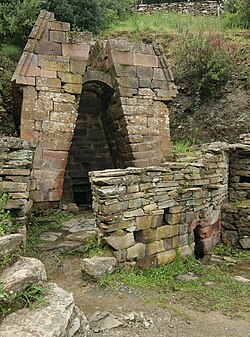
The nuragic holy well is a Sardinian Bronze Age structure for the worship of the waters. Scattered throughout the island, along with the Giants' grave and the megaron temples, they testify to the deep religiosity of the Nuragic populations. These temples were a place of pilgrimage and ceremonies: it is believed that at certain times of year the various nuragic populations of the area gathered together in their vicinity.










